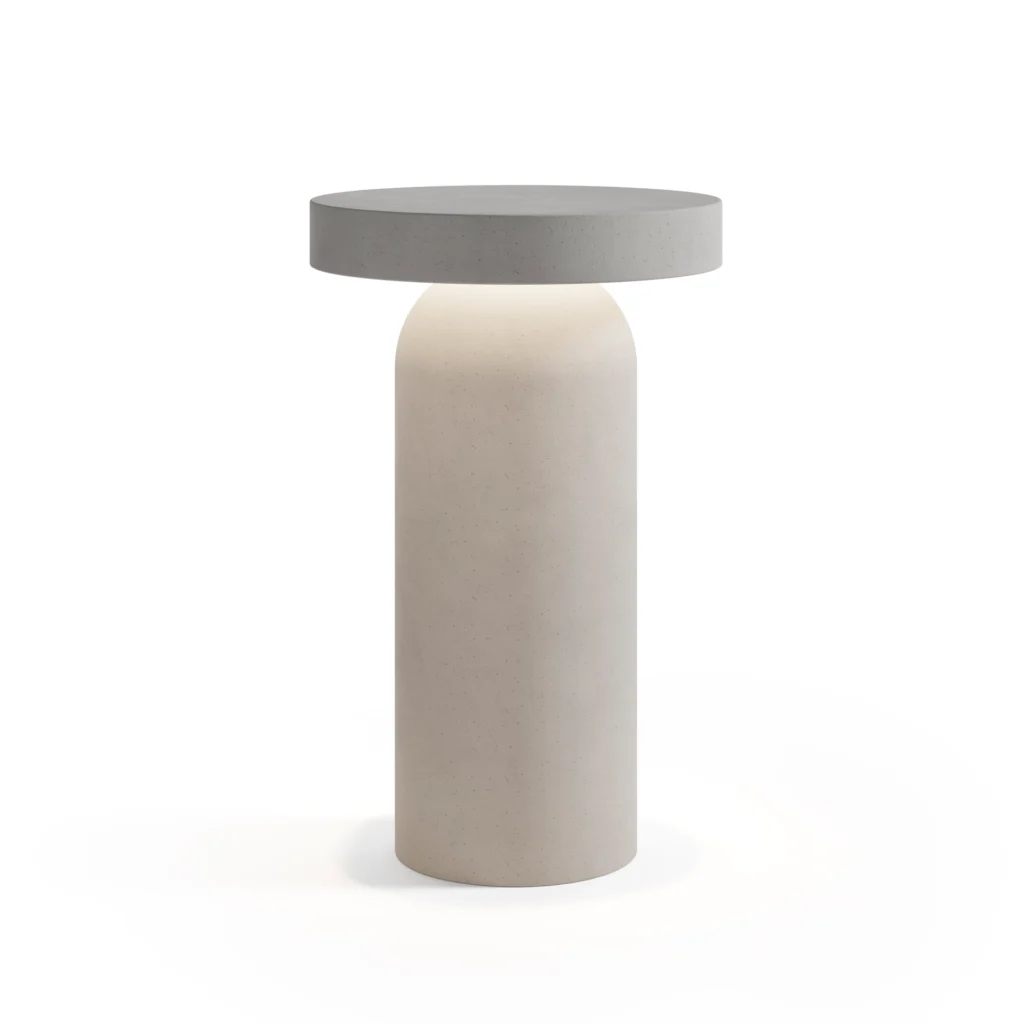NuiTerra
designed by Meneghello Paolelli
Equilibrio, simbiosi e interazione: il cuore del progetto della collezione di lampade da terra e parete outdoor Nui è dato dal rapporto fra due volumi cilindrici sovrapposti che si completano e interagiscono tra di loro. Parti di un unicum formale, questi due volumi acquisiscono significati diversi e complementari.
Il blocco superiore, proposto in tre varianti, diventa l’alloggio della fonte luminosa, nascosta alla vista e orientata verso terra; il blocco inferiore, semisferico nella sua parte alta, oltre ad essere il supporto del precedente, ne diventa il diffusore. Le lampade sono realizzate in cemento grigio chiaro: l’effetto che ne deriva è quello di oggetti scultorei e minimali, ma con una forte personalità.
I quattro diversi modelli (tre da terra e uno a parete), sono in grado di personalizzare gli spazi outdoor in modo non convenzionale e con una forte valenza decorativa.
A02TA1
Nui A model

A02TA1
Nui A model
Specifiche principali
| Typology | Terra | ||||||
|---|---|---|---|---|---|---|---|
| Application | Esterno | ||||||
| Material |
|
||||||
| Finishes |
|
||||||
| Dimensions (mm) | H 170, D ø 185 | ||||||
| Weight (kg) | 5.6 | ||||||
| Light Source | LED 14W (only light source – for more details, download datasheet), 3000K, CRI 90 | ||||||
| Insulation Class | III |
A02TB2
Nui B model

A02TB2
Nui B model
Specifiche principali
| Typology | Terra | ||||||
|---|---|---|---|---|---|---|---|
| Application | Esterno | ||||||
| Material |
|
||||||
| Finishes |
|
||||||
| Dimensions (mm) | H 310, D ø 185 | ||||||
| Weight (kg) | 10.9 | ||||||
| Light Source | 3000K, CRI 90 | ||||||
| Insulation Class | III |
A02TC4
Nui C model

A02TC4
Nui C model
Specifiche principali
| Typology | Terra | ||||
|---|---|---|---|---|---|
| Application | Esterno | ||||
| Material |
|
||||
| Finishes |
|
||||
| Dimensions (mm) | H 50, D ø 185 | ||||
| Weight (kg) | 5.5 | ||||
| Light Source | 3000K, CRI 90 | ||||
| Insulation Class | III |
A02TD2
Nui D model

A02TD2
Nui D model
Specifiche principali
| Typology | Terra | ||
|---|---|---|---|
| Application | Esterno | ||
| Material |
|
||
| Finishes |
|
||
| Dimensions (mm) | H 140, D ø 185 | ||
| Weight (kg) | 5.3 | ||
| Light Source | LED 12W (only light source – for more details, download datasheet), 3000K, CRI 90 | ||
| Insulation Class | III |









